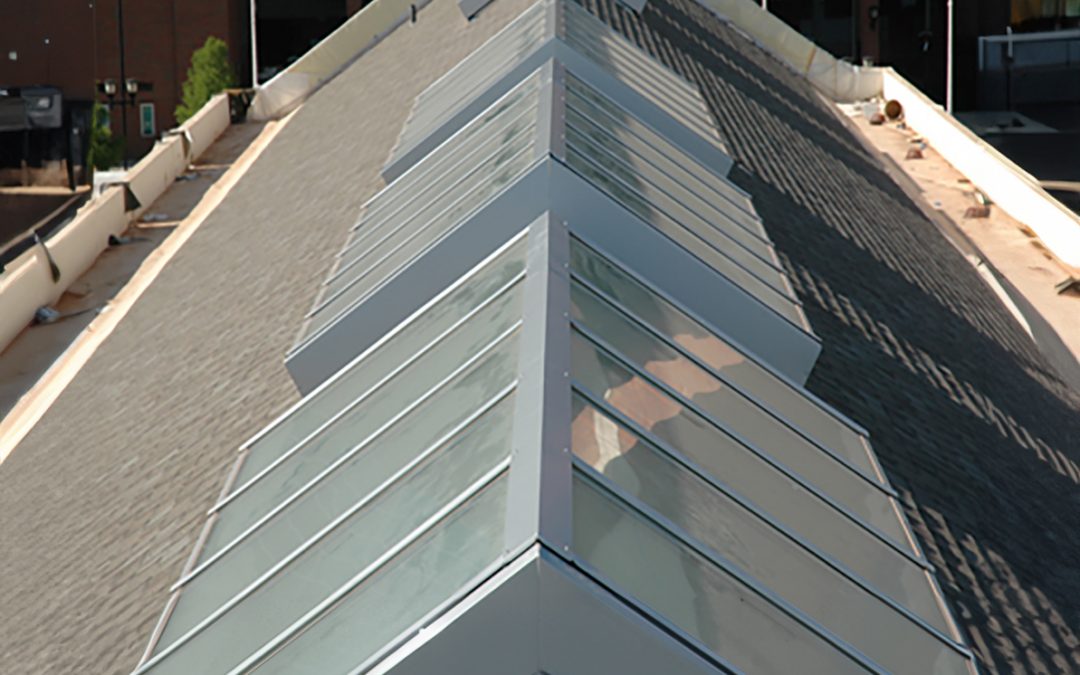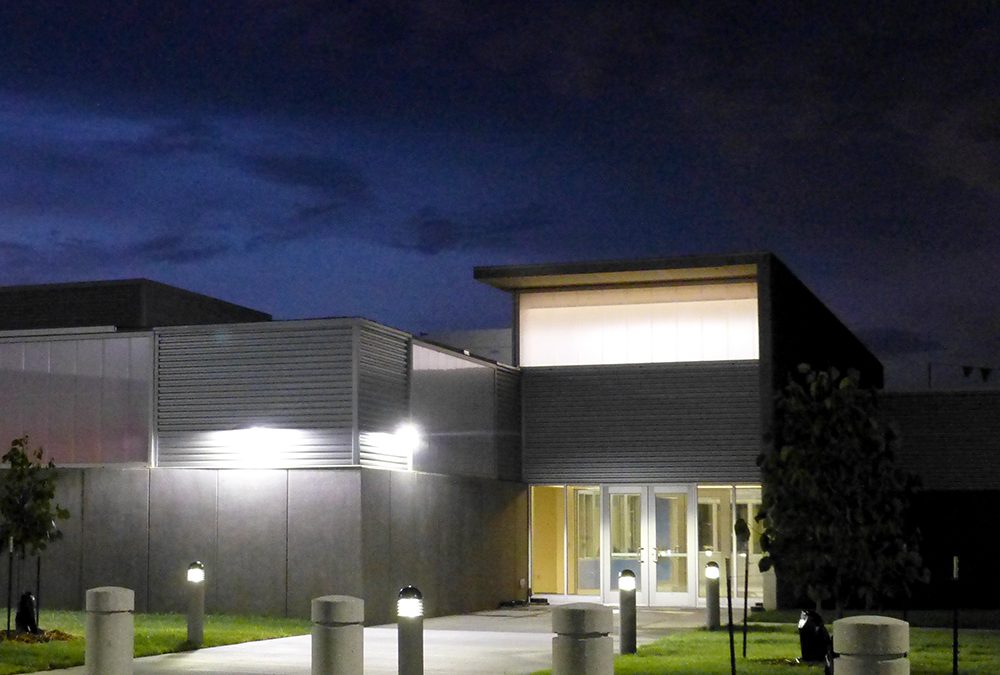Heat Gain & Heat Loss

Carefully planning for heat loss and heat gain can reduce heating/cooling costs while giving you the benefit of an additional daylight source.
Working in an industry that uses glass and polycarbonate for structures and openings in the roof, we know a lot about heat gain and heat loss. It’s a big concern for almost all of our customers, especially when considering the impact on potential LEED certification.
WHAT IS HEAT GAIN AND HEAT LOSS?

Heat loss, measured in kW or BTUs, reflects the total transfer of heat through the fabric of the building from the inside out. Since we manufacture structures from aluminum and glass or polycarbonate, the information in this article will deal only with these elements. Although heat loss and heat gain can happen through any part of the building’s envelope.
The opposite of heat loss is heat gain, also referred to as solar gain. Heat gain occurs when warmth comes into the space via radiant heat as the sun shines through the glass. It’s also a sign of a low U value rating. Heat gain also occurs as cool air escapes through seals.
Knowing what heat loss and heat gain are, how to reduce them, and what it means when specifying the type of glazing for a skylight, solarium, greenhouse, or the like, will help to answer any questions about the internal building environment.
Many times, the benefit of a skylight or glazed structure is that you can get the light and warmth from the sun to help offset the costs of electricity and heating oil. It’s true that in Northern climates the heat gain can help other heating systems perform better, increasing overall comfort in a room. But for the glazed structure to actually be of benefit to keeping a room comfortable, the glass or polycarbonate must provide enough heat gain to offset any heat loss – through the same glazing.
HOW IS SOLAR HEAT GAIN AND HEAT LOSS CALCULATED?
As mentioned above, heat loss is measured in kWs or BTUs and is a function of heat transfer rates.
Heat transfer rates are measured in U values. The U value is the overall heat transfer coefficient and indicates how well glazing will heat. A low U value signifies glass that transfers less heat whereas a high value indicates that the glass is not going to perform well thermally.
The opposite or reciprocal of the U value is the R-value. R values are commonly used with rating types of insulation but can also be applied to glazing.
The solar heat coefficient is the fraction of incident solar radiation admitted through a window, both directly transmitted and absorbed and subsequently released inward. The solar heat gain coefficient is expressed in a number between 0 and 1. The lower a window’s solar heat gain coefficient, the less solar heat it transmits.
So if you have a product with a low U value and high R-value you can be sure it has less heat loss and will then help keep the room warmer. If you have a lower solar heat gain coefficient, the glazing will gain less heat, thus it helps keep the room cooler.
WHY ARE HEAT GAIN AND HEAT LOSS IMPORTANT?
The amount of heat loss is important for several reasons:
- Based on what the space will be used for, you’ll want to be sure that it is adequately heated or cooled as necessary
- Understanding heat loss is a key factor in green building and LEED certification
- Determining any additional heating/cooling needed for comfort levels and the associated costs for running HVAC or electrical to the glazed structure
Different climates have different needs as well. So if you are building a glazed structure in North America you’ll want glazing with a high heat gain to help warm up the space. But if you are in Florida or Arizona, you’ll want glazing with a low heat gain.
REDUCING HEAT LOSS AND ENERGY CONSUMPTION
There are several ways to reduce energy consumption and heat loss (or heat gain). These include:
- Improving the insulation through the use of dual-pane glazing or sunshades
- Reducing air leakage by using larger glazed panels (fewer edges mean less heat loss/gain)
CHOOSING THE RIGHT GLAZING
Carefully planning for heat loss and heat gain will save you money. It can reduce heating/cooling costs while giving you the benefit of an additional daylight source. We recommend low emissivity (Low-E) glazing with a low U value to help keep heat gain or heat loss within acceptable levels. For additional information on glazing options that offset heat loss/gain, please review our High-Performance Glass charts.
More From This Category

The 4 Types of Ridge Skylights
Four types of ridge skylightsRidge skylights combine aesthetic appeal with functional...

Why Businesses Are Choosing Reglazing for Skylights and Glazed Structures
Rather than entirely replacing skylights or glazed structures, reglazing just the IGUs provides...

Polycarbonate clerestories are shedding new light on energy-efficient daylighting.
Polycarbonate provides translucent brilliance in filtering natural lightA clerestory is an...

